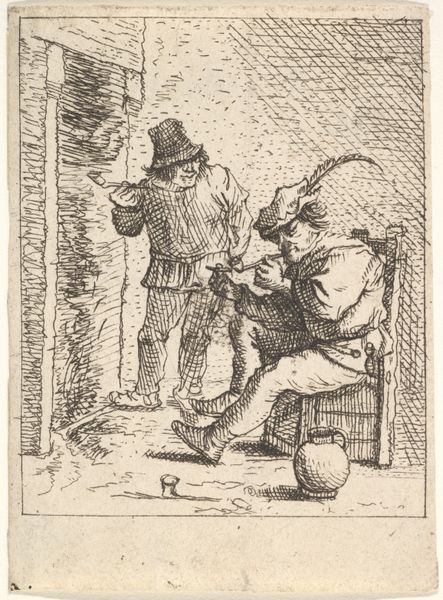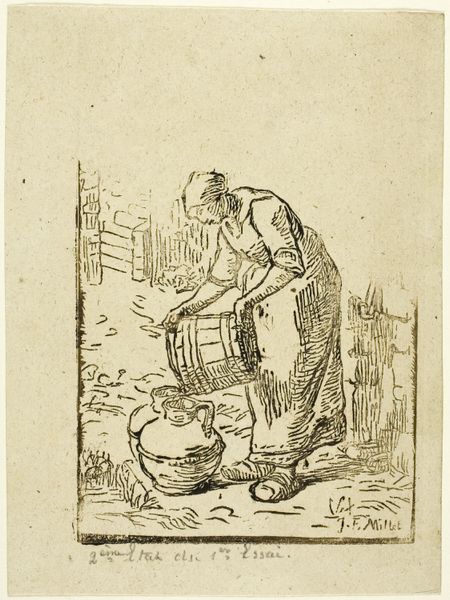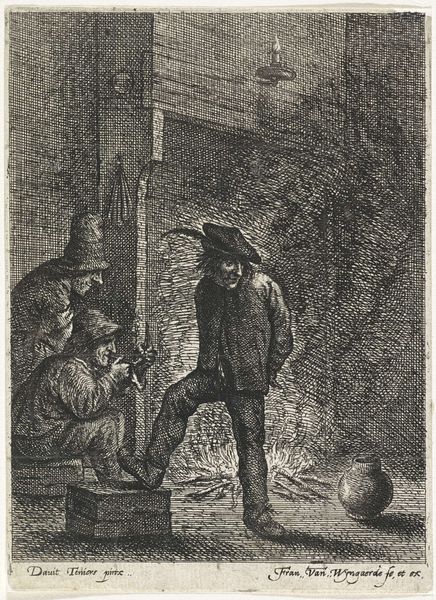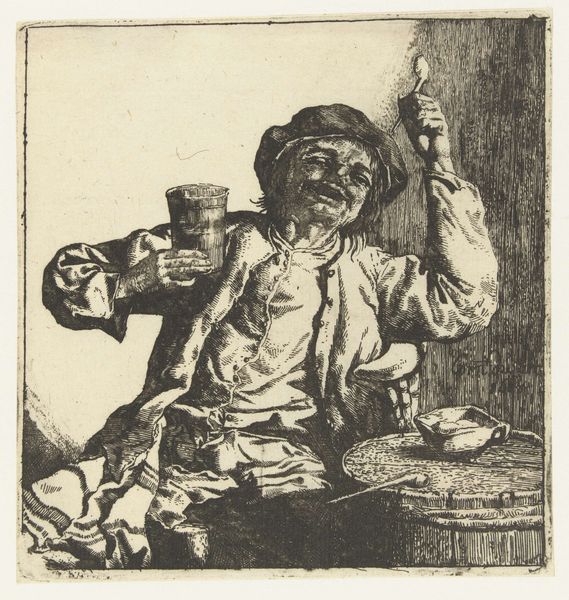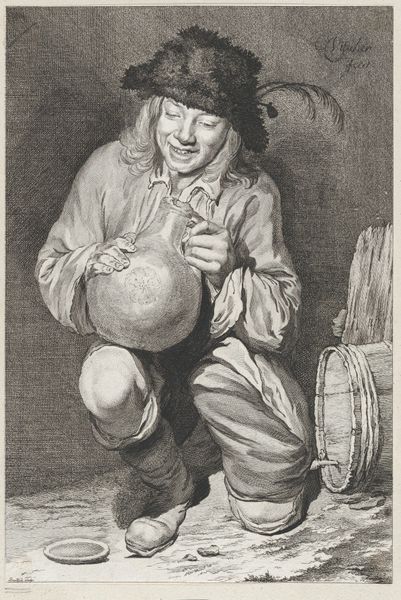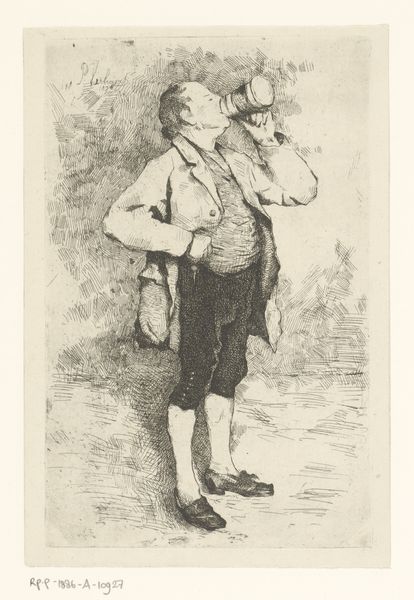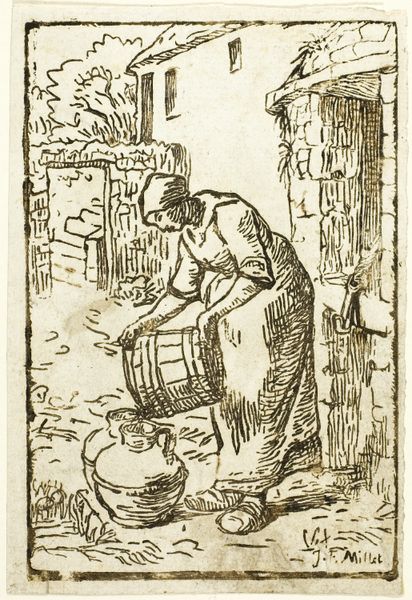
drawing, print, etching, paper
#
portrait
#
drawing
# print
#
etching
#
paper
#
genre-painting
#
realism
Dimensions: 85 × 71 mm (image); 152 × 76 mm (chine); 198 × 129 mm (plate); 433 × 311 mm (sheet)
Copyright: Public Domain
Curator: Charles Jacque's 1843 etching, "Drinker," now in the Art Institute of Chicago, offers a glimpse into 19th-century genre painting. Editor: My first impression is that it looks both meticulous and almost whimsical. The etching style makes me think about labor-intensive work to create prints for wider consumption. There's such precise detail in the man’s striped pants, set against a more vaguely rendered backdrop. Curator: Indeed. The etching process itself, with its grounding in manual labor and its capacity for mass production, makes Jacque's choice of medium particularly resonant. It reflects the changing landscape of art consumption. Editor: It also humanizes an individual from probably the working classes. How does Jacque engage with contemporary debates around poverty or class during the period? The figure is neither overly romanticized nor overtly criticized. Curator: I believe Jacque employs realism to prompt discussions about labor and economic realities. Look at the detail devoted to the barrel—likely holding wine—and then at the cup in the man's hand. These are the products of labor and materials distributed for the classes. Editor: The cup itself is significant. The man seems to be reflecting and assessing his drink, giving the sense he's contemplating his current station. Are similar pieces indicative of Jacque’s oeuvre, perhaps speaking to social dynamics of imagery during this time? Curator: Precisely. The etching participates in the broader 19th-century phenomenon of genre painting that offered artists to explore everyday life and it raises awareness, for better or worse. Editor: "Drinker" provides much to contemplate beyond the man’s activity of drinking. The chosen materials add another, material level to social considerations of his work. Curator: I agree; from a social perspective it highlights the dynamics between art, industry, and social commentary, offering both production of the work, as well as its reception within society.
Comments
No comments
Be the first to comment and join the conversation on the ultimate creative platform.

